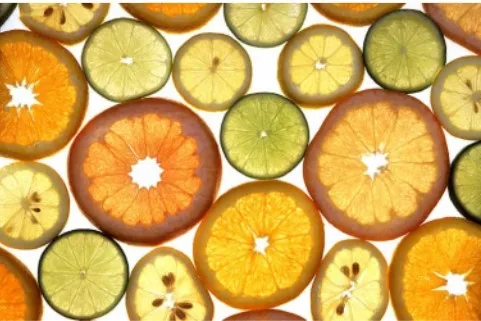
Polyembryony: Polyembryony is the phenomenon of multiple embryos developing within a single ovule, seed, or fertilized ovum, which occurs in plants. Polyembryony is especially noticeable in certain animals, such as parasitic Hymenoptera, where a single zygote can produce up to 2,000 embryos. Antoni van Leeuwenhoek first observed this phenomenon in plants in 1719 when he noted that orange seeds exhibited it. Polyembryony is so common in gymnosperms that it is a key characteristic of this plant group.
Most gymnosperms with polyembryony produce two or more archegonia within a female gametophyte. Because each archegonium contains an egg, two or more eggs can be fertilized, forming multiple embryos. Typically, only one embryo survives, and the others die during development. The article below contains more information on polyembryony in plants and its various types.
Flower – A Fascinating Organ of Angiosperms
What is Polyembryony in Plants?
Polyembryony refers to the development of multiple embryos within a single ovary, seed, or fertilized egg. This occurs in plants and animals and plays an important role in genetic replication and diversity.
In plants, fertilisation is the process by which male sperm cells fuse with an ovule, forming seeds. Each seed typically contains an embryo, an early stage of plant development.
Polyembryony is particularly common in gymnosperms and is frequently regarded as a distinguishing feature of this plant group. In many gymnosperms with polyembryony, the female gametophyte produces multiple archegonia, each with an egg. As a result, multiple archegonia causes the fertilisation of two or more eggs, forming multiple embryos within a single seed.
Overall, polyembryony promotes plant species propagation and genetic diversity while providing insights into various organisms' reproductive mechanisms. Polyembryony in citrus is given below:

Polyembryony in plants is an important topic covered in the class 12 chapter on sexual reproduction in flowering plants . NEET candidates should thoroughly prepare for this topic in order to avoid missing any questions in the NEET exam.
Types of Polyembryony
There are primarily two types of polyembryony:
- Spontaneous (or naturally occurring polyembryony)
- Induced (or experimentally induced polyembryony)
However, according to Weber's theory, polyembryony can be classified into three types:
Cleavage polyembryony: In cleavage polyembryony, a single fertilised egg can give rise to multiple embryos. When an embryo divides into several identical parts, each part can develop into a mature embryo. A common example of cleavage polyembryony is seen in Pinus.
Types of Seeds, Monocot and Dicot, Advantages, Seed Viability
Simple polyembryony: This type of polyembryony occurs when several archegonia are fertilised. When more than one egg is fertilised, it is called simple polyembryony. Adventive polyembryony is the formation of additional embryos through sporophytic budding. It is common in Cycas, lemon, groundnut, mango, Pinus, onion, and orange.
Rosette polyembryony: In rosette polyembryony, multiple additional embryos are produced from cells known as rosette cells.
Classes of Polyembryony in Gymnosperms
Polyembryony in Various Types of Gymnosperms
- Cycadales: Simple polyembryony occurs in this group, though it is uncommon. A.N Rao discovered it in Cycas Circinalis. Occasionally, two connected archegonia from the same ovule develop independently into two embryos, resulting in two seedling.
- Coniferales: This group, which lives in cooler regions, exhibits both Simple and Cleavage Polyembryony. Cleavage embryos have been found in Pine, Cedrus, Tsuga, Sciadopitys, Sequoia, Thuja, Juniperus, and Podocarpus. However, both types are widespread in Pressressus.
- Taxales: Simple polyembryony occurs when multiple archegonia eggs are fertilised. Taxus had 16 nuclei before the wall was constructed. The final stage of the proembryo can have several cells, but only one cell typically gains dominance over the others by cutting off a portion of the apical cell. Cleavage Polyembryony of hanging cells can also be seen here.
- Gnetales: This group shows polyembryony in a variety of ways. Each primary suspensor tube can develop a fetus at the top, producing multiple embryos. The fetal weight at the top of the second suspensor may rise to accommodate more embryos. The cells of the second suspensor can be meristematic and produce multiple embryos. In the first suspensor tube, two or more cells may form instead of one group of cells, resulting in more embryos at the top.
Polyembryony Examples
The examples of polyembryony are as follows:
- Cleavage polyembryony is predominantly observed in gymnosperms.
- Simple polyembryony is characteristic of Brassica.
- Mixed polyembryony is found in Argemone Mexicana and Ulmus Americana.
- Adventive polyembryony is most commonly found in citrus plants, as well as in Mangifera and Opuntia.
Pollination, Types, Agents, Pollen Pistil Interaction
Causes of Polyembryony
There are several theories proposed to explain polyembryony:
- Necrohormone Theory: According to this theory, cells undergo nucellus degeneration, which stimulates adjacent cells to divide, resulting in the formation of adventive embryos.
- Hybridisation Theory: This theory suggests that during hybridisation, genes recombine to form a single unit, leading to the creation of multiple embryos.
Post Fertilisation – Structures and Events in Flowering Plants
Importance of Polyembryony
Polyembryony is important for:
- Plant breeding and horticulture: The embryos in fruit trees, such as citrus and mango, are often free from genetic variation, making them valuable for maintaining desirable traits in new generations of plants.
- Nucellar disease: Polyembryony plays a role in the propagation of fruit trees, as the embryos produced are genetically uniform, helping to ensure consistent quality and characteristics in seedlings.
- Propagation: Polyembryony offers a method for developing homozygous diploid plants, which can be advantageous in breeding programmes aimed at fixing desirable traits.
- Artificial production: Polyembryony can be artificially induced to produce genetically uniform plant material from eggs or synergids, ensuring the quality and productivity of fruit tree crops.
Embryo, Development, Monocots And Dicots Plants, Embryogenesis
Polyembryony and Apomixis
Apomixis and polyembryony are two distinct reproductive processes in plants:
- Apomixis:
- Type of asexual reproduction.
- Seeds are produced without fertilisation.
- Offspring are identical to their parents.
- Seeds are produced without fertilisation.
Sexual Reproduction in Flowering Plants MCQ
- Polyembryony:
- Formation of several embryos from a fertilised egg or seed.
- It involves fertilisation of the ovum.
- Offspring are non-identical to their parents but identical to each other.
- Seeds are produced only with fertilisation.
Physics Wallah proudly offers the online coaching for NEET Class 12 students . Our Class 12 NEET online courses, which include access to top-tier instructors and study materials, are specifically designed to meet the needs of NEET candidates. All classes will be recorded and made easily accessible through our PW App/Web platform.
| NEET Biology Important Links | |
| NEET Biology Syllabus | NEET Biology Diagrams |
| NEET Biology MCQ | NEET Biolofy Chapter wise Weightage |
| NEET Biology Notes | NEET Previous Year Question papers |
Polyembryony FAQs
What is polyembryony and can you give an example?
What is a polyembryony fruit?
What is the difference between polyembryony and apomixis?
Can you provide some examples of polyembryony?
What is polyembryony in Class 12 biology?
Is Apple an example of polyembryony?










